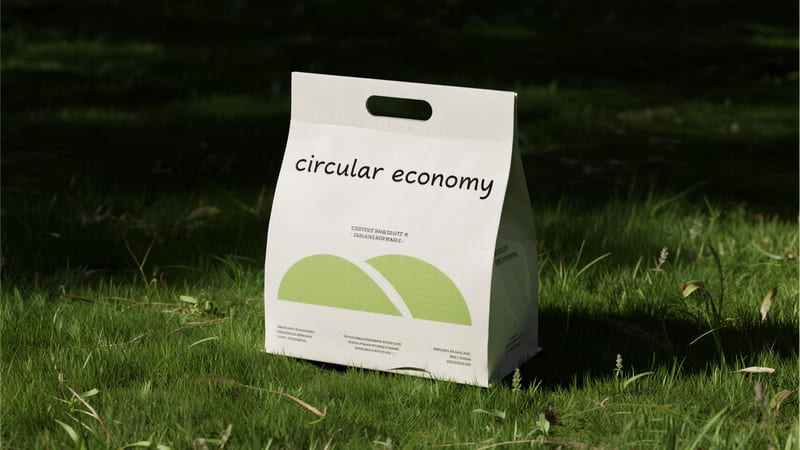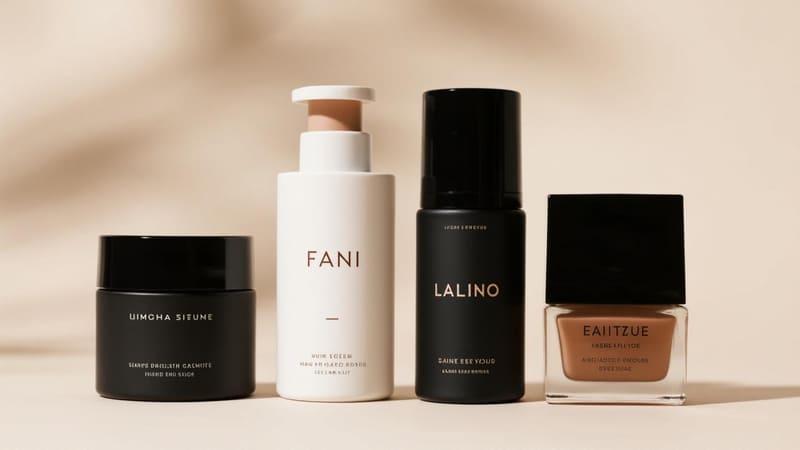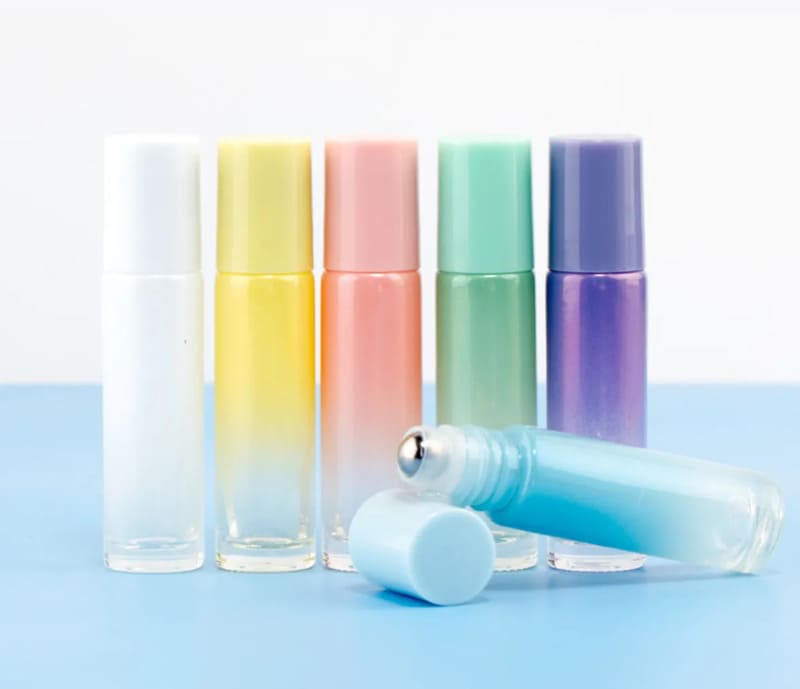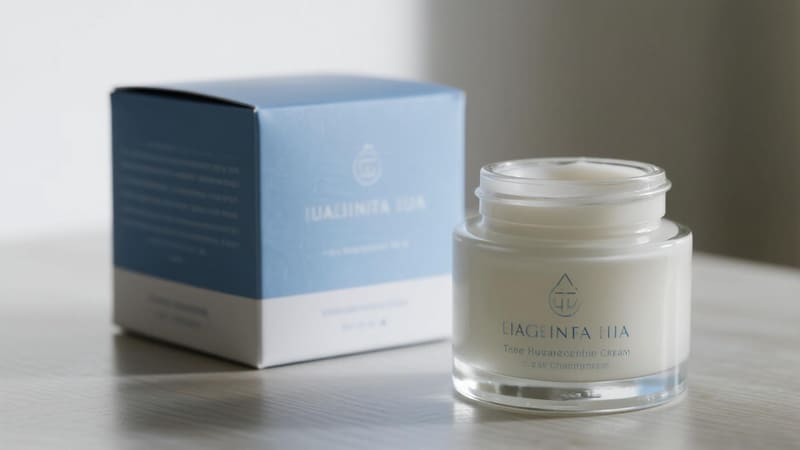You see them everywhere, from drugstore aisles to high-end department store counters – those alluring boxes that encase our favorite beauty products. But what exactly defines a "cosmetic box," and what role does it play?
Cosmetic boxes are a form of secondary packaging, typically made from paperboard or rigid board, designed to house, protect, and promote cosmetic products like makeup, skincare, and fragrances. They serve to enhance brand appeal, provide product information, and ensure the primary container reaches the consumer intact.
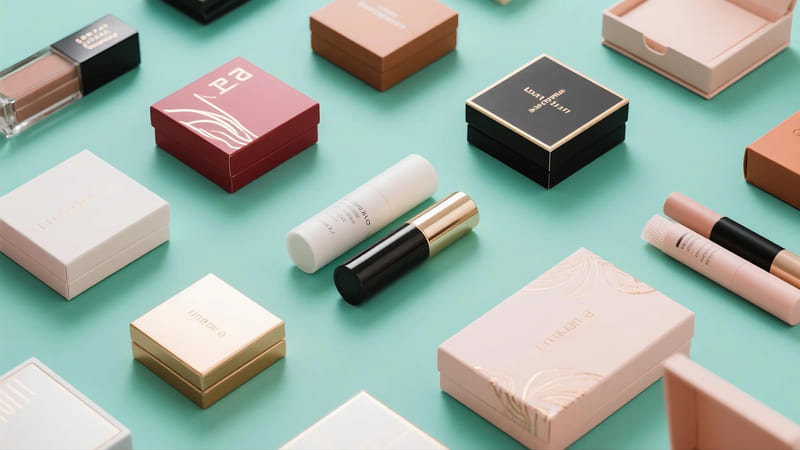
Cosmetic boxes are much more than simple containers; they are a critical marketing tool and a key component of the overall product experience. As a packaging manufacturer with ShineTop for over two decades, I’ve seen how a well-designed box can significantly impact a brand’s success. Let’s delve deeper into the world of cosmetic boxes.
What is a Cosmetic Box?
While the term seems straightforward, a "cosmetic box" specifically refers to the outer packaging, distinct from the primary container that directly holds the cosmetic formulation.
A cosmetic box is the external carton or rigid container, usually made of paper-based materials, that encloses the primary packaging of a cosmetic product (e.g., a lipstick tube, a cream jar, a perfume bottle). Its functions include protection, branding, information display, and enhancing shelf presence.
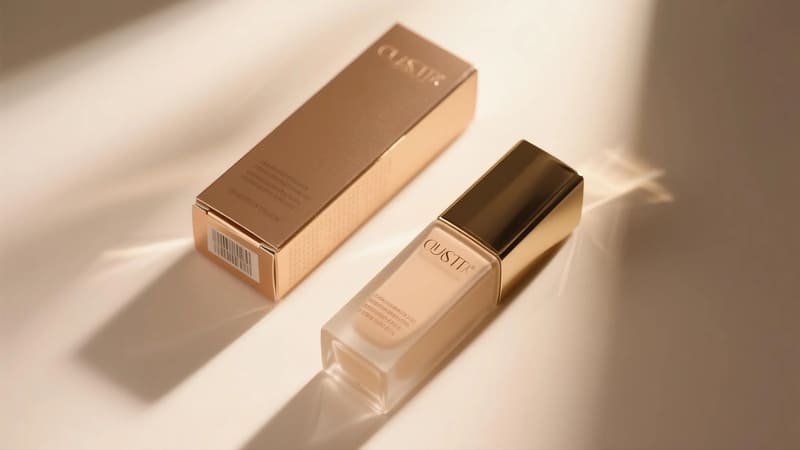
Think of the cosmetic box as the product’s outfit – it’s what the consumer often sees first and what makes the initial impression.
Key Characteristics and Functions:
-
Material:
- Folding Cartons: Most commonly made from paperboard (e.g., SBS – Solid Bleached Sulfate, CUK – Coated Unbleached Kraft, or recycled board). These are shipped flat and assembled by the brand or co-packer.
- Rigid Boxes (Set-Up Boxes): Made from thick greyboard overwrapped with specialty paper or printed wraps. They are more durable, offer a premium feel, and do not collapse. Often used for luxury items or gift sets.
-
Protection:
- Provides an additional layer of protection for the primary container against scratches, dents, light exposure, and minor impacts during shipping and handling.
-
Branding & Marketing:
- Offers significant surface area for branding elements: logo, brand colors, imagery, and taglines.
- Helps create a cohesive brand look across a product line.
- Can be designed with various finishes (matte, gloss, foil stamping, embossing) to enhance appeal and convey brand positioning (e.g., luxury, natural, clinical).
-
Information Display:
- Crucial for displaying legally required information: ingredient lists, net weight, manufacturer/distributor details, usage instructions, warnings, batch codes, and barcodes. Often, there isn’t enough space for all this on the primary container alone.
-
Shelf Impact & Merchandising:
- A well-designed box can make a product stand out on crowded retail shelves.
- Can be designed with windows to show the primary product or with features that aid in retail display (e.g., hang tabs).
-
Enhancing Perceived Value:
- A high-quality, aesthetically pleasing box can make the product inside seem more valuable and desirable. This is particularly true for rigid boxes.
- Mohammed, my client from Iraq, relies heavily on custom rigid drawer boxes we produce at ShineTop for his luxury gift sets. The box itself is a key part of the premium experience.
Cosmetic boxes are an integral part of the product’s presentation and journey to the consumer.
What is the Meaning of Cosmetic Packaging?
"Cosmetic packaging" is a broader term that encompasses all the components used to contain, protect, and present a cosmetic product, including the cosmetic box itself.
Cosmetic packaging refers to the total system of protective and presentational materials used for cosmetic products. This includes the primary container (in direct contact with the product), secondary packaging (like boxes or sleeves), labels, inserts, applicators, and any tertiary packaging used for shipping and distribution.
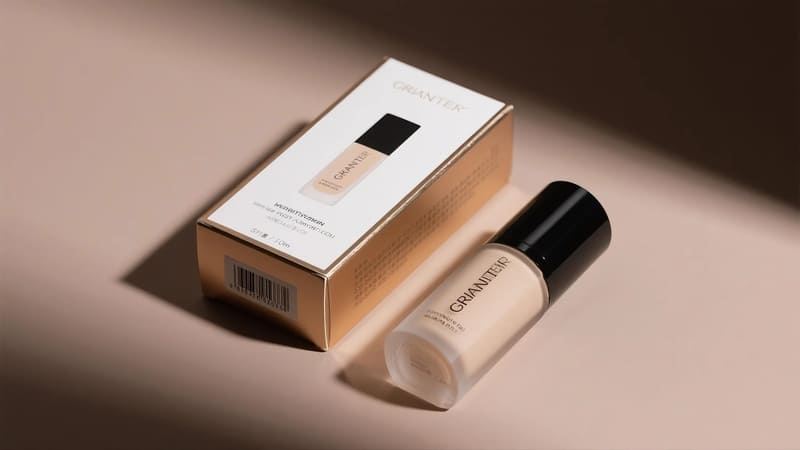
Cosmetic packaging is a holistic concept, where each component plays a role in delivering the product safely and effectively while reinforcing the brand’s message.
Layers and Components:
- Primary Packaging: The bottle, jar, tube, compact, lipstick case, etc., that directly holds the cosmetic formulation. Its main functions are containment and compatibility with the product.
- Secondary Packaging (e.g., Cosmetic Boxes): The outer carton or wrap that houses the primary pack. Its roles include additional protection, branding, information, and shelf appeal.
- Tertiary Packaging: Bulk packaging like master cartons, shrink wrap, and pallets used for shipping and warehousing.
- Labels: Provide product identification, ingredients, instructions, and branding. Can be on primary or secondary packaging.
- Inserts/Leaflets: Provide additional information, instructions, or brand storytelling that may not fit on the label or box.
- Applicators: Spatulas, brushes, wands, puffs, etc., that may be included with the product.
- Closures: Caps, pumps, sprayers, lids that seal the primary container.
The "Meaning" or Purpose of Cosmetic Packaging:
Beyond these physical components, the meaning of cosmetic packaging lies in its strategic functions:
- Protection & Preservation: Ensuring product integrity and safety.
- Brand Communication: Conveying the brand’s identity, values, and story.
- Consumer Information: Providing necessary details for informed choice and safe use.
- Marketing & Sales: Attracting customers and driving purchase decisions.
- User Experience: Facilitating ease of use and enhancing the ritual of application.
- Regulatory Compliance: Meeting all legal requirements for labeling and safety.
At ShineTop, as a one-stop solution provider, we consider all these layers and meanings when developing custom packaging solutions, from the design of a unique bottle to the intricate finishes on its cosmetic box.
What is Considered a Cosmetic Item?
To understand cosmetic packaging, it’s essential to know what products fall under the "cosmetic" umbrella, as this definition influences regulatory requirements and packaging needs.
A cosmetic item is generally defined as a substance or preparation intended to be applied to the external parts of the human body (skin, hair, nails, lips, external genital organs) or to the teeth and mucous membranes of the oral cavity with a view exclusively or mainly to cleaning them, perfuming them, changing their appearance, protecting them, keeping them in good condition, or correcting body odors.
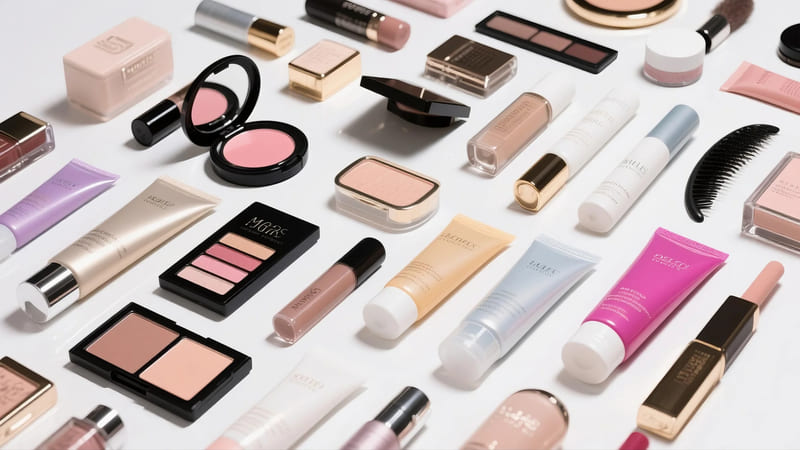
This definition is key because it distinguishes cosmetics from drugs or therapeutic goods, which have different regulatory pathways and claims limitations.
Examples of Cosmetic Items:
- Makeup:
- Foundation, concealer, primer
- Eyeshadow, eyeliner, mascara
- Lipstick, lip gloss, lip liner
- Blush, bronzer, highlighter
- Nail polish
- Skincare:
- Cleansers, toners, moisturizers, serums
- Sunscreens (often dually classified as cosmetic and OTC drug in some regions if making SPF claims)
- Face masks, exfoliants
- Eye creams, anti-aging creams (that don’t make drug claims)
- Body lotions, hand creams
- Haircare:
- Shampoos, conditioners
- Hair styling products (gels, mousses, sprays)
- Hair dyes (temporary and permanent)
- Hair treatments (masks, oils – that don’t make drug claims like hair growth)
- Fragrances:
- Perfumes, Eau de Parfum, Eau de Toilette, colognes
- Body sprays
- Oral Care (Cosmetic Aspects):
- Toothpaste (for cleaning and whitening, not treating disease)
- Mouthwashes (for freshening breath)
- Personal Hygiene:
- Soaps, shower gels, bath products
- Deodorants, antiperspirants (antiperspirants are often OTC drugs due to affecting a bodily function)
Key Distinction: If a product claims to treat or prevent a disease, or affect the structure or function of the body (beyond simple cleansing or beautifying), it’s likely classified as a drug, not just a cosmetic. For example, an acne cream that claims to "treat acne" is a drug, while a foundation that "helps cover blemishes" is a cosmetic. This distinction heavily impacts labeling and packaging claims.
What are the Different Types of Cosmetic Packaging?
The world of cosmetic packaging is incredibly diverse, with various forms, materials, and dispensing mechanisms tailored to the vast array of cosmetic products available.
Different types of cosmetic packaging include bottles (glass, plastic), jars (glass, plastic), tubes (plastic, aluminum, laminate), airless pumps, compacts, lipstick/lip gloss applicators, mascara wands, droppers, sprayers, tins, flexible pouches, and secondary packaging like folding cartons and rigid boxes.

The type of packaging chosen depends heavily on the product’s formulation, viscosity, application method, brand aesthetic, and cost considerations.
Common Categories of Cosmetic Packaging Types:
-
Bottles:
- Materials: Glass, PET, HDPE, PP.
- Uses: Lotions, serums, toners, cleansers, foundations, fragrances, shampoos.
- Closures: Pumps, sprayers, droppers, screw caps, disc-top caps.
-
Jars:
- Materials: Glass, PP, PET, SAN, Acrylic (PMMA).
- Uses: Face creams, body creams, masks, scrubs, balms, loose powders.
- Closures: Screw-on lids, often with an inner sealing disc.
-
Tubes:
- Materials: LDPE, HDPE, Laminate (ABL/PBL), Aluminum.
- Uses: Creams, gels, cleansers, lotions, toothpaste, hair colorants, lip gloss.
- Closures: Flip-top caps, screw caps, nozzle tips.
-
Airless Packaging (Bottles & Jars):
- Mechanism: Piston or collapsing bag system that dispenses product without letting air in.
- Uses: Sensitive formulations, serums, foundations, high-end creams.
- Benefits: Protects from oxidation, extends shelf life, hygienic, allows for near-total product evacuation.
-
Compacts:
- Materials: Plastic (ABS, PS, PP), sometimes metal.
- Uses: Pressed powders, blushes, bronzers, eyeshadows, cream-to-powder foundations.
- Features: Often include a mirror and an applicator well.
-
Lipstick & Lip Gloss Components:
- Lipstick Cases: Mechanism with a base, elevator, and cap. Materials include plastic, aluminum.
- Lip Gloss Vials/Tubes: Typically plastic or glass, with a wand and doe-foot or brush applicator.
-
Mascara Components:
- Bottle/Vial and a specialized brush/wand.
-
Droppers (Pipettes):
- Glass or plastic pipette with a rubber or silicone bulb, used with bottles.
- Uses: Serums, facial oils, concentrated treatments.
-
Sprayers & Pumps:
- Fine mist sprayers, lotion pumps, foam pumps. Attached to bottles.
-
Tins & Metal Containers:
- Aluminum or tinplate.
- Uses: Lip balms, solid perfumes, salves, waxes, candles.
-
Flexible Packaging (Sachets & Pouches):
- Single-use samples, face masks, refill pouches.
-
Secondary Packaging (Boxes):
- Folding Cartons: Paperboard boxes.
- Rigid (Set-Up) Boxes: Premium, non-collapsible boxes.
Anna, a cosmetics manufacturer in Thailand, uses a variety of these for her line: glass dropper bottles for serums, PET jars with PP lids for creams, and printed paperboard boxes (cosmetic boxes) for almost all her retail products. This diverse selection, much of which we at ShineTop help her source or customize, ensures each product is appropriately and attractively packaged.
Conclusion
Cosmetic boxes are essential secondary packaging that protect, promote, and inform, playing a vital role within the broader system of cosmetic packaging. Understanding what constitutes a cosmetic item and the diverse types of packaging available allows brands to make strategic choices that enhance product appeal, ensure safety, and build a strong brand identity in the competitive beauty market.



